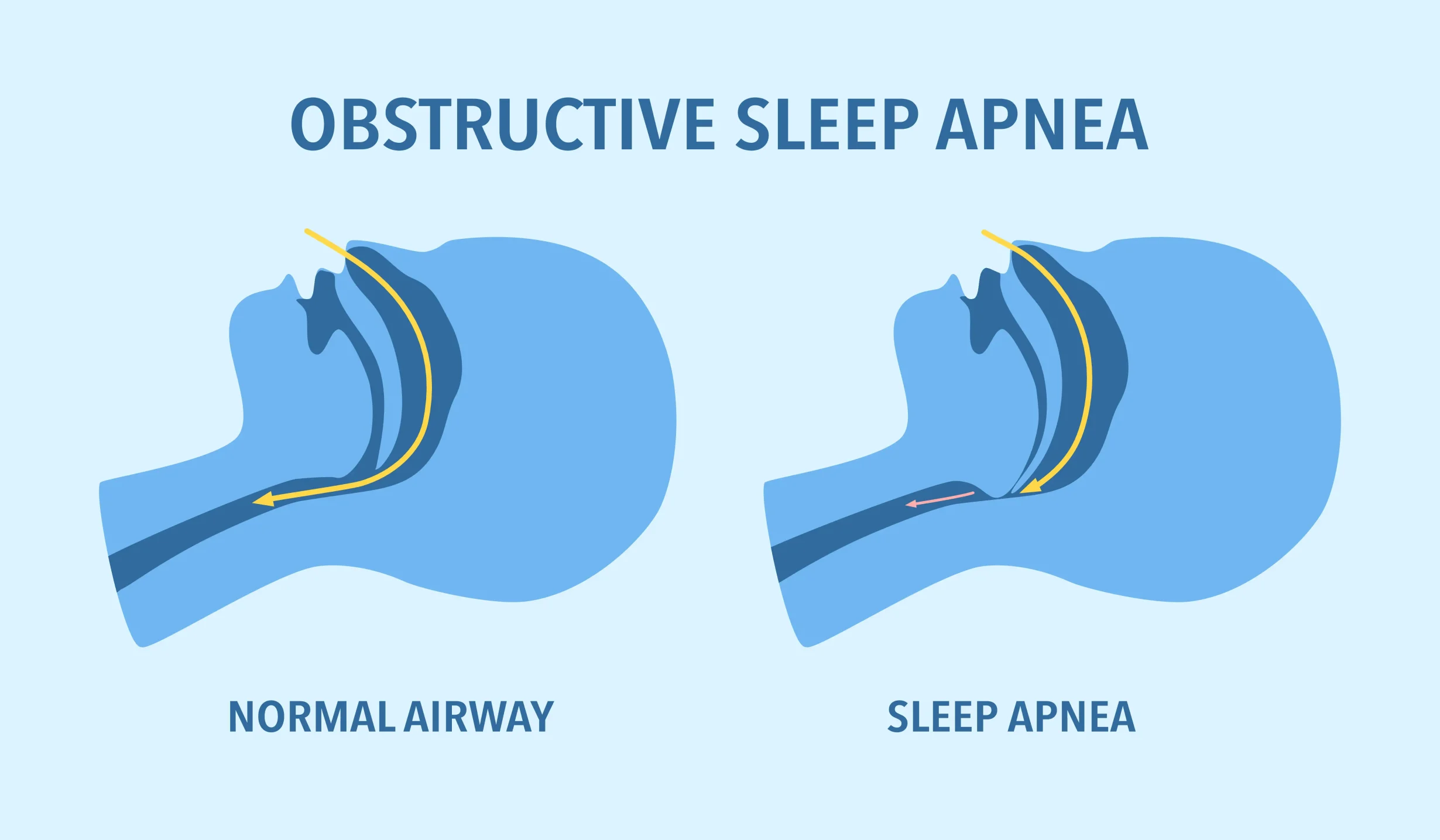Obstructive sleep apnea (OSA) is a common sleep disorder characterized by repeated episodes of upper airway collapse during sleep, leading to pauses in breathing. These pauses can last from a few seconds to minutes, disrupting sleep and causing significant health problems.
Symptoms of Obstructive Sleep Apnea
- Loud Snoring: A common symptom, often accompanied by gasping or choking sounds.
- Daytime Sleepiness: Excessive daytime sleepiness, even after a full night’s sleep.
- Morning Headaches: Frequent headaches upon waking.
- Difficulty Concentrating: Trouble focusing or paying attention.
- Irritability and Mood Swings: Mood disturbances due to poor sleep quality.
- High Blood Pressure: Sleep apnea can contribute to high blood pressure.
Risk Factors for Obstructive Sleep Apnea
- Obesity: Excess weight, especially around the neck, can narrow the airway.
- Family History: A family history of sleep apnea can increase the risk.
- Age: The risk of sleep apnea increases with age.
- Hormonal Changes: Hormonal changes, such as those associated with menopause, can contribute to sleep apnea.
- Anatomical Factors: Enlarged tonsils, adenoids, or a deviated septum can narrow the airway.
Complications of Obstructive Sleep Apnea
Untreated sleep apnea can lead to serious health problems, including:
- Heart Disease: Increased risk of heart attack and stroke.
- High Blood Pressure: Sleep apnea can contribute to high blood pressure.
- Type 2 Diabetes: Sleep apnea can increase the risk of developing type 2 diabetes.
- Cognitive Impairment: Difficulty concentrating, memory problems, and decreased cognitive function.
Treatment for Obstructive Sleep Apnea
The most common treatment for obstructive sleep apnea is continuous positive airway pressure (CPAP) therapy. A CPAP machine1 delivers a continuous flow of air through a mask worn over the nose and mouth, keeping the airway open during sleep.
Other treatment options may include:
- Oral Appliances: Dental devices that can help keep the airway open.
- Surgery: In some cases, surgery may be necessary to correct anatomical issues, such as enlarged tonsils or a deviated septum.
- Lifestyle Changes: Losing weight, avoiding alcohol and sedatives, and sleeping on one’s side can help reduce symptoms.
If you suspect you may have sleep apnea, it’s important to consult with a healthcare professional for proper diagnosis and treatment. Early intervention can help2 improve your quality of life and reduce the risk of serious health complications.



